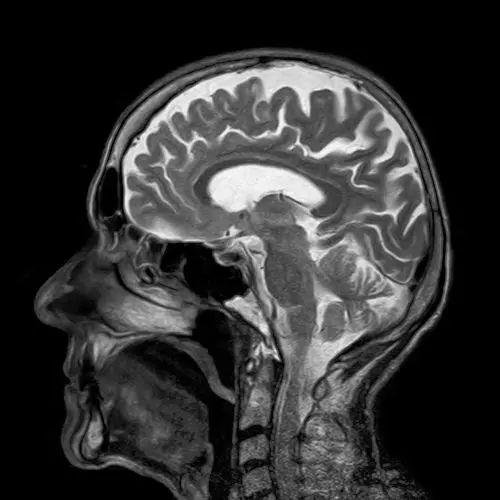Headaches are a very common source of pain and disability and one of the first steps to recovery is to know what type of headache that you have. Nearly everyone experiences at least one headache a year. When headaches occur repeatedly, they are a symptom of a headache disorder. Headaches are not only painful and disabling, but they can affect relationships, employment, and overall health and wellness. Despite this, the burden of headache disorders continues to be poorly acknowledged.
Fortunately, there are effective, conservative treatment options for headache disorders. They are often successfully managed by chiropractors through a detailed evaluation, manual therapy, lifestyle modifications, and appropriate exercise prescription. To understand the impact of headache disorders and how to best manage them, let’s begin with a general overview of the causes and types, red flags, and treatment options.

What Causes Different Types of Headaches?
Some headache disorders may have no known cause. However, each of the common different types of headaches are associated with a specific cause. See the lists below for examples of causal factors of headaches.
Causes of Headaches
- Stress and muscle tension
- Posture and ergonomics
- Environmental factors
- Hormonal fluctuations
- Food sensitivities
- Poor sleep and nutrition
- Neck and jaw referral pain or nerve compression
More serious causes of headaches
- Concussion
- High blood pressure
- Blood clot
- Ear Infection
- Sinus infection
- Aneurysm
- Dehydration

These lists are not exhaustive but provide many, great examples of potential causes of headache disorders. At times it may be difficult to identify the cause of a headache disorder until a thorough assessment has been performed. Fortunately, a patient’s signs and symptoms do help to identify potential causes, which then allows for the correct classification and appropriate treatment plan.
What Type of Headache Do I Have?
There are more than 300 different types of headaches with several different categories. The International Classification of Headache Disorders (ICHD) provides an in-depth classification process containing diagnostic criteria for headache disorders. The ICHD classifies headaches disorders into primary or secondary headaches, painful cranial neuropathies, and “other” facial pain or headaches. Primary headaches are headaches with a known, specific cause. Secondary headaches are headaches that are due to an underlying medical condition, such as a neck injury or a sinus infection.
Common types of headaches include:
- Tension Headaches
- Temporal Headaches
- Migraine Headaches
- Cervicogenic Headaches
- Cluster Headaches
- Sinus Headaches
- Occipital Neuralgia

Tension headaches present as tightness around the head, as if the head were in a vise. Pain and tightness are normally felt in the forehead and potentially around to the back of the head and neck. Other symptoms associated with tension headaches can include soreness and tightness in the neck and jaw.
Cervicogenic headaches are headaches that are directly caused due to neck pain and they present differently than most headaches. There is some overlap between tension headaches and cervicogenic headaches. Pain often starts at the base of the skull. The pain distribution of a cervicogenic headache can be described as a ram’s horn, with pain beginning at the base of the skull that wraps forwards to the forehead and eye. These symptoms are typically on one side of the head and they can be easily aggravated with head and neck movements.
Pain that occurs in the temples could be a few different things. Problems with the temporomandibular (TMJ) joint, tension headaches, stress headaches and cervicogenic headaches can all cause pain in the temples. There is one type of temporal headache that results from an inflammation in an artery in that area called temporal arteritis. It can feel like a burning, jabbing or burning pain in the temples or around the ears and it will rarely affect people under 50 years old.
Migraines are not just bad headaches. If you are experiencing a migraine headache, there is most likely pain on one or both sides of your forehead, at your temples, or around your eyes. The pain felt during a migraine is different from a typical headache and can be described as pulsating or throbbing. Other symptoms include nausea, possibly vomiting, and sensitivity to light and/or sound. Migraines can be preceded by abnormal sights, smells or feelings which are known as auras.
Cluster headaches have the tendency to occur in clusters where they are present for weeks (or even months) and then disappear for up to a years. They are excruciating and because they are usually accompanied by tearing and congestion, they may be mistaken for other types of headaches. These are made worse by alcohol consumption and smoking and usually are seen in men aged 20-50 years old.
One of the most commonly over-diagnosed conditions is sinus headaches. Migraines and cluster headaches are often misdiagnosed as sinus headaches. The pain can be different depending on the sinus, but is often in the forehead, between the eyes or under the eyes. The pain is caused by an acute infection in the sinuses whether pressure builds up due to swelling of tissue and blockage of the drainage ducts. Nasal polyps may need to be removed.
When the occipital nerves are inflamed, it results in an aching, throbbing and/or burning called occipital neuralgia. The pain is continuous and can send pain shooting up through the scalp to one or sometimes both sides of the head. It can be very similar to migraines, tension headaches, cervicogenic headaches and cluster headaches. Sharp pains can be triggered by light touches, such as brushing the hair.

Chronic vs. Acute Types of Headaches
There are many different types of headache disorders and often the above categories can be classified according to whether they have been going on for a long time and how often they occur. Migraines and tension headaches can be considered chronic depending on your history and the frequency. Chronic migraines are headaches that occur more than 15 days per month for more than 3 months and the headaches need to have the features of a migraine for at least 8 days out of the month. Chronic Daily Headaches are chronic headaches that can be related to the overuse of medications and be the evolution or transformation of a migraine.
Acute types of headaches can include headaches from hang-overs, caffeine withdrawal, exertional (weight lifter’s headache, headaches from coughing), fasting and hunger. Thunderclap headaches have severe pain and are swift in onset so they need a trip to the emergency room to rule out life-threatening problems. Post-traumatic headaches are also acute and can occur after seemingly minor traumas but they tend to be resistant to medication.
When To Worry About A Headache?
As mentioned earlier, most types of headache disorders have a known cause. These headaches can be evaluated, given a clear diagnosis, and treatment plan. However, there are some types of headaches that may be serious and warrant further medical attention.

Here are some warning signs for when you should worry about headaches:
- When someone develops a new type of headache over the age of 50
- A severe, unusual, or atypical headache, compared to what you normally experience
- Headache that comes on with an increase in pressure, whether coughing or bearing down, etc.
- Headaches that continue to worsen overtime
- When there is a change in personality, confusion, memory problems, visual changes, dizziness, or other related mental disorders
- Headaches with signs of infection and/ or a stiff neck
- Headaches that wake you up from sleeping
While headache disorders are common, we cannot ignore them, especially if your symptoms do not feel like a typical headache. Seek medical attention immediately if you are experiencing any of the above warning signs.
How to Treat Different Types of Headaches?
The best way to treat a headache disorder is to schedule an appointment with us or your local chiropractor. During your appointment your doctor will perform a detailed initial evaluation. This will include listening to your symptoms, screening for red flags, assessing your movement, and imaging may be taken.
From the initial evaluation, the correct diagnosis of the type of headache can be made, and the appropriate treatment can begin.

Treatments for many types of headache disorders typically include manual therapy to the joints and soft tissue of the cervical spine and around the face, including the jaw and all of the bones that make up the skull. Graston Technique is used in our Toledo Area office to help treat many types of headaches. Chiropractic adjustments are an extremely safe and effective method of treating headaches.
Corrective exercises are an extremely important part of treating multiple different types of headaches, so stretching and strengthening exercises will also be prescribed to help improve the function of the muscles of your neck and face. Tightness of the neck and jaw can cause referred pain to the head. Therefore, it is important to treat these areas with manual therapy and exercise as well.
More importantly, posture and ergonomics can be addressed to ensure you are moving optimally throughout the day in order to decrease stress to your head and neck.
If your initial evaluation indicates that you need further medical treatment for your headache disorder, an appropriate referral to another health care provider for further testing will be made. One of the things that sets Dr. Royer apart from other chiropractors in the area is that he is the only functional neurologist in the Toledo, Ohio area. Chiropractic neurology is important in evaluating and properly treating migraines and the various strange symptoms that can accompany them.
READY TO START FEELING BETTER?
If you are experiencing any symptoms of any type of headache disorder, call 419-517-5055 today to schedule an appointment with us. Find out what is causing your headache, what type of headache you are experiencing, ensure you have no red flags, and begin the correct treatment that you need.
You can schedule an appointment at our office in the Sylvania and Toledo area. To schedule your free, no obligation consultation with Dr. Royer, call the office at (419) 517-5055 or click to contact us.
